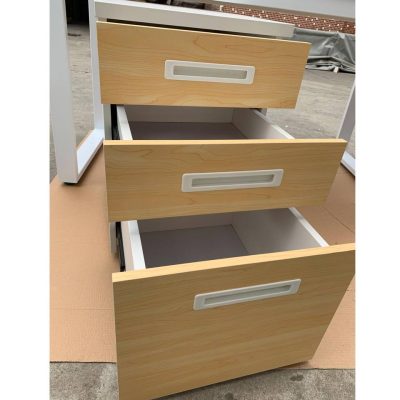Edge banding is used most often in various woodworking and furniture-making applications to finish and protect the exposed edges of materials like plywood, particleboard, MDF (Medium-Density Fiberboard), and even solid wood. It is a common practice in both residential and commercial settings. Some of the primary areas where edge banding is used most often include:

- Cabinetry: Edge banding is extensively used in kitchen cabinets, bathroom vanities, office furniture, and other types of cabinetry to provide a clean, finished appearance and protect the exposed edges from moisture and wear.
- Furniture: In the manufacturing of furniture, edge banding is applied to exposed edges of tables, desks, bookshelves, and other items to enhance their durability and aesthetics.
- Shelving: Edge banding is commonly used on the edges of shelves to create a smooth and protected edge, especially in retail displays and storage systems.
- Countertops: In kitchen and bathroom countertops, edge banding is applied to the front edges to create a polished look and to protect the underlying substrate from water and other potential damage.
- Doors and Drawer Fronts: Cabinet doors and drawer fronts often have edge banding applied to their exposed edges to match the overall design and to protect the edges from everyday use.
- Office Furniture: In office environments, desks, workstations, and storage units are frequently equipped with edge banding to ensure the edges remain durable and maintain a professional appearance.
- Store Fixtures and Displays: Retail fixtures, such as shelves, displays, and counters, use edge banding to create an attractive and damage-resistant edge finish.
- Interior Paneling: Edge banding can be found on the edges of wall paneling and wainscoting to improve the appearance and protect the material from damage.
- Custom Woodworking: In custom woodworking projects, edge banding is often used to create a polished and professional look for items like custom cabinetry, built-in bookcases, and more.
- DIY Projects: Home DIY enthusiasts use edge banding for various projects, from constructing custom furniture to revamping existing pieces, to achieve a professional, finished look.
Edge banding is a versatile solution for creating a polished, long-lasting edge finish in a wide range of applications. It not only improves the aesthetic appearance of materials but also enhances their durability and resistance to wear, making it a common practice in woodworking and furniture-making industries.
